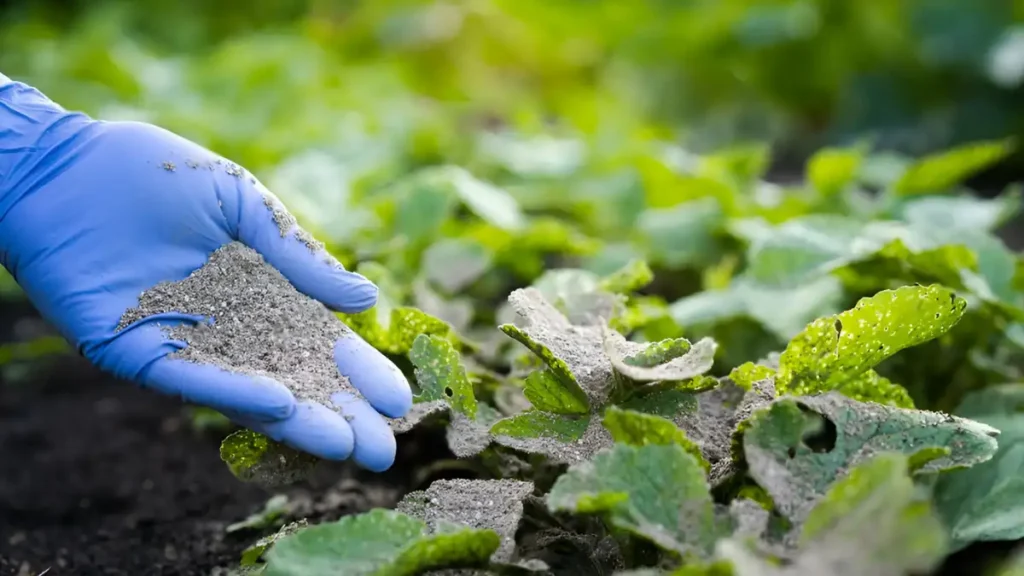Ancient people were aware of the advantages of using wood ashes in their gardens. Potassium, phosphorus, and trace minerals are among the many minerals found in wood ash. Wood ash can quickly make the soil too alkaline, and plants can readily burn from the high salt content, thus it must be applied sparingly. When handled properly, wood ash can help deter pests and pathogens. A flexible and sustainable gardening option is provided by wood ash. Learn how to utilize wood ash safely and improve your garden by reading this extensive tutorial.
Which Kind of Wood Ash Is Best:
- There are more nutrients in hardwood ashes than in softwood ash. Never use pressure-treated wood ash. Among other hazardous substances, pressure-treated wood has carcinogens. It is never recommended to burn pressure-treated wood and to utilize the ash in the garden because doing so will harm the soil.
- In most cases, ash from any wood fire will suffice. Wood stoves, boilers, incinerators, fire pits, burned brush pits, burning barrels, and fireplaces are what this often refers to.
- Hardwood ash is preferred since it contains more nutrients, which can speed up the composting process. You can use it sparingly to prevent excessive pH elevation, which could interfere with composting.
- Although it usually contains fewer useful minerals and has a rougher texture, softwood ash can still be utilized.
Utilizing Wood Ash as Fertilizer:
- Wood ash has a low nitrogen content, therefore it’s not usually thought of as fertilizer. Wood ash contains considerable amounts of calcium, carbon, magnesium, manganese, sulfur, potassium, phosphorus, copper, iron, and chromium, among other minerals that are essential for plant growth in addition to being organic and soluble in water.
- While lye and salt together won’t harm your plants in tiny doses, they might burn them in bigger doses. Diverse wood ash fertilizers exist.
- The nutrients and minerals in your wood ash will be significantly higher if the fireplace ashes in your compost are mostly composed of hardwoods like oak and maple.
Benefits of wood ash in garden:
- The most popular usage for wood ash is pH adjustment of the soil. Acidic soil can be swiftly neutralized by wood ash because of its high alkaline pH of 10 to 12. However, because it can quickly make the soil too acidic, it should only be used sparingly.
- Moreover, wood ash works well to keep pests away. Pests such as slugs, snails, and certain soft-bodied invertebrates can be eliminated by the salt included in wood ash. Wood ash can be used as a pesticide by simply sprinkling it about the base of plants that soft-bodied bugs are attacking.
- The quality of compost can be increased by adding wood ash, which can also help balance the pH and add vital nutrients. Wood ash’s alkaline composition can aid in balancing out compost pile smells.
Wood ash uses for the garden :
- Wood ash should be added to bare soil at least a few weeks before planting, but not too soon as it will wash away nutrients due to its solubility. The wood ash should be raked or dug out you don’t want to plant seeds in it, and combining it with soil a few weeks in advance allows the ash to begin decomposing.
- Wood ash can easily damage germination seeds due to its high salt content, therefore avoid applying it close to them. Avoid going overboard. Limit its frequency to once a year since excessive amounts of wood ash or several fertilizers may render certain nutrients inaccessible to plants.
- Your garden may get overrun with ash if you heat your home solely with wood. Don’t make heavy, repetitive applications in the same area of your garden. Think about distributing some throughout the grass or mixing some with fresh compost pile additions.
- Ash treatments are ineffective for your plants that prefer acid, including rhododendrons, azaleas, blueberries, and raspberries. Even with acidic soil, avoid these plants.
Conclusion:
In conclusion, The study’s findings demonstrate that adding wood ash to forest soil can significantly alter the amount, diversity, richness, and composition of bacteria in the community. In the garden, wood ash is an essential ingredient. It will promote the growth of the garden if applied in compliance with the previously mentioned rules. There’s going to be a stunning garden.
Certainly! If you’d like to learn more, please consider following our WhatsApp Channel: Harvest Gardening
A frequently asked questions:
Q1. What plants don’t like wood ash?
A1. Plants that do not like wood ash are pear, apple, and peach trees. Sweet potatoes, parsley, rhubarb, eggplant, and sweet corn. fruit such as raspberries, blueberries, and most others.
Q2. What are the disadvantages of wood ash?
A2. Never use pressure-treated, painted, or wood ash from the trash since these materials can include heavy metals and other substances that are harmful to plants. Because most wood ash material contains trace levels of heavy metals, care should be taken when handling it.
Q3. Is wood ash good for grass?
A3. Sure, to increase the overall quality of your soil, correctly distribute firepit ash to your lawn.
Q4: How to spread wood ash on lawn?
A4: Apply wood ash to lawns using a yard spreader or hands, avoiding over 20 pounds per 1,000 square feet. Water the area after application for proper incorporation.

